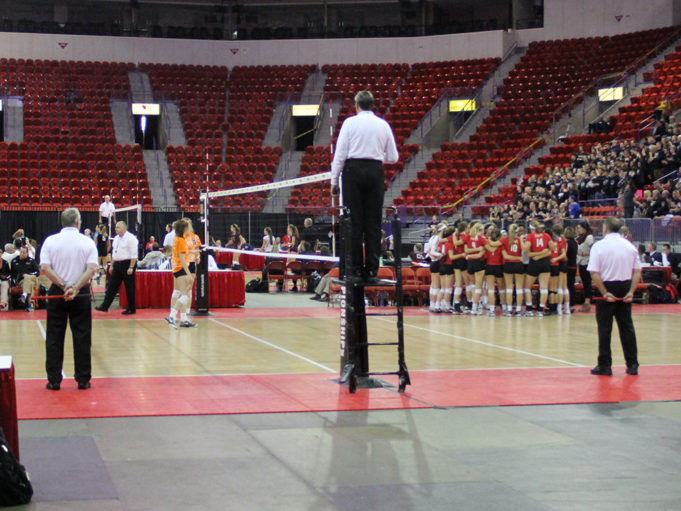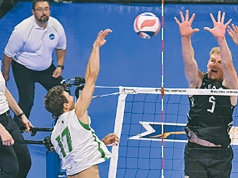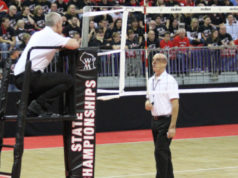As most volleyball officials would agree, non-verbal communication encompasses approximately 80-90 percent of our communication with coaches, players, partners and fans. There are so many facets to officiating and the use of the verbal language plays a minor role in communicating our myriad decisions.
Non-verbal communication is the transmitting of information relevant to the sport without using spoken words. Our professional character is closely scrutinized from the time we appear at the assignment site until we depart, and our decisions and how we relay them during the course of the match are frequently judged on our non-verbal communication skills.
Consider our methods of communication pre-match, during the match and post-match. We are not infallible, but we are often expected to call the perfect match even when the play is not perfect. Officials must project the image of a well-trained, confident and reticent professional. Referees must become masters of the unspoken signals in the rulebook.
When we arrive at a site, our appearance is critical to our presentation. It is imperative that we arrive dressed professionally, neatly and conservatively. It is also important that when we enter the court in uniform, we look the part of a professional with the slacks and shirt clean and pressed, hair worn in a non-distracting manner, limited makeup/jewelry for women, and facial hair neatly trimmed for men. Officials should also limit strong fragrances found in perfume, cologne, aftershave or lotions.
Posture is vital in transmitting confidence and knowledge. Making eye contact with those directly involved with the match shows respect. When we do communicate verbally with coaches or players, we should always strive to face them, look them in the eye and speak with a quiet authority and transmit self-assurance that we are knowledgeable and comfortable in our roles.
Paying attention to detail is important during our assignments. Our interactions with our working partners and support crews of officials such as line judges, scorekeeper, libero tracker and timers, as well as media and host management personnel is closely scrutinized by others.
Referees should present a cohesive front while executing their duties. Whistle tone needs to be crisp, sharp and loud. A weak, late or barely audible whistle tone indicates a lack of decisiveness or knowledge. Additionally, we do not want to blow the whistle so quickly that we must award multiple replays.
Our focus must remain sharp, especially during warm-ups and non-action times such as timeouts, between sets and during the intermission. We must anticipate substitutions, replacements and timeout requests from coaches. At times, we are expected to “read the minds” of coaches and players, and how we present ourselves can assist us in alleviating unforeseen problems. Staying engaged in the match is vital to being perceived as qualified.
Always support your working partner, even if there are items that need to be discussed post-match. When working with less-experienced officials, our body language often communicates our support or disdain for the assigned working partner. There is nothing wrong with an occasional quick thumbs up or smile.
We must be approachable as officials without being manipulated or allowing coaches or players to cause distractions or delays. We must enforce all of the rules, including those concerning conduct.
Proximity can also be an issue when discussing items with those associated with the match. Where we stand, how we stand and what we do with our arms transmit a welcoming or a “do not approach” signal, like standing with arms folded across the chest. Failure to make eye contact can indicate lying or a lack of interest in the conversation.
Use of a “stop sign” hand up to ward off problems can be offensive to coaches and players, and the same goes with pointing fingers at players or coaches. Thus, the use of an open hand or indicating a player’s numbers to communicate a fault is a better method.
Communication with coaches, players and your partner is a big part of every match. How we are perceived as officials is definitely judged, more often than not, by not only what we say, but how we officiate and communicate non-verbally.
What's Your Call? Leave a Comment:
Note: This article is archival in nature. Rules, interpretations, mechanics, philosophies and other information may or may not be correct for the current year.
This article is the copyright of ©Referee Enterprises, Inc., and may not be republished in whole or in part online, in print or in any capacity without expressed written permission from Referee. The article is made available for educational use by individuals.


















